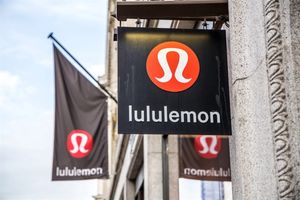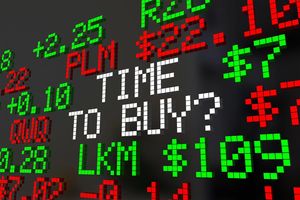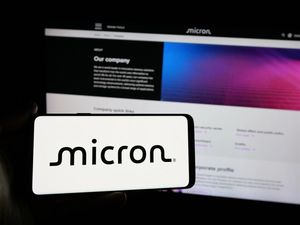
Rail transportation company Greenbrier (NYSE: GBX) announced better-than-expected revenue in Q2 CY2025, with sales up 2.7% year on year to $842.7 million. The company’s full-year revenue guidance of $3.25 billion at the midpoint came in 1.1% above analysts’ estimates. Its non-GAAP profit of $1.86 per share was 88.8% above analysts’ consensus estimates.
Is now the time to buy Greenbrier? Find out by accessing our full research report, it’s free.
Greenbrier (GBX) Q2 CY2025 Highlights:
- Revenue: $842.7 million vs analyst estimates of $785.7 million (2.7% year-on-year growth, 7.3% beat)
- Adjusted EPS: $1.86 vs analyst estimates of $0.99 (88.8% beat)
- Adjusted EBITDA: $128.5 million vs analyst estimates of $98.34 million (15.2% margin, 30.7% beat)
- The company reconfirmed its revenue guidance for the full year of $3.25 billion at the midpoint
- Operating Margin: 11%, up from 8.8% in the same quarter last year
- Free Cash Flow was $56.5 million, up from -$50.2 million in the same quarter last year
- Sales Volumes (orders received) fell 38.1% year on year (37% in the same quarter last year)
- Market Capitalization: $1.45 billion
Company Overview
Having designed the industry’s first double-decker railcar in the 1980s, Greenbrier (NYSE: GBX) supplies the freight rail transportation industry with railcars and related services.
Revenue Growth
A company’s long-term sales performance can indicate its overall quality. Even a bad business can shine for one or two quarters, but a top-tier one grows for years. Unfortunately, Greenbrier’s 2.9% annualized revenue growth over the last five years was sluggish. This fell short of our benchmarks and is a poor baseline for our analysis.
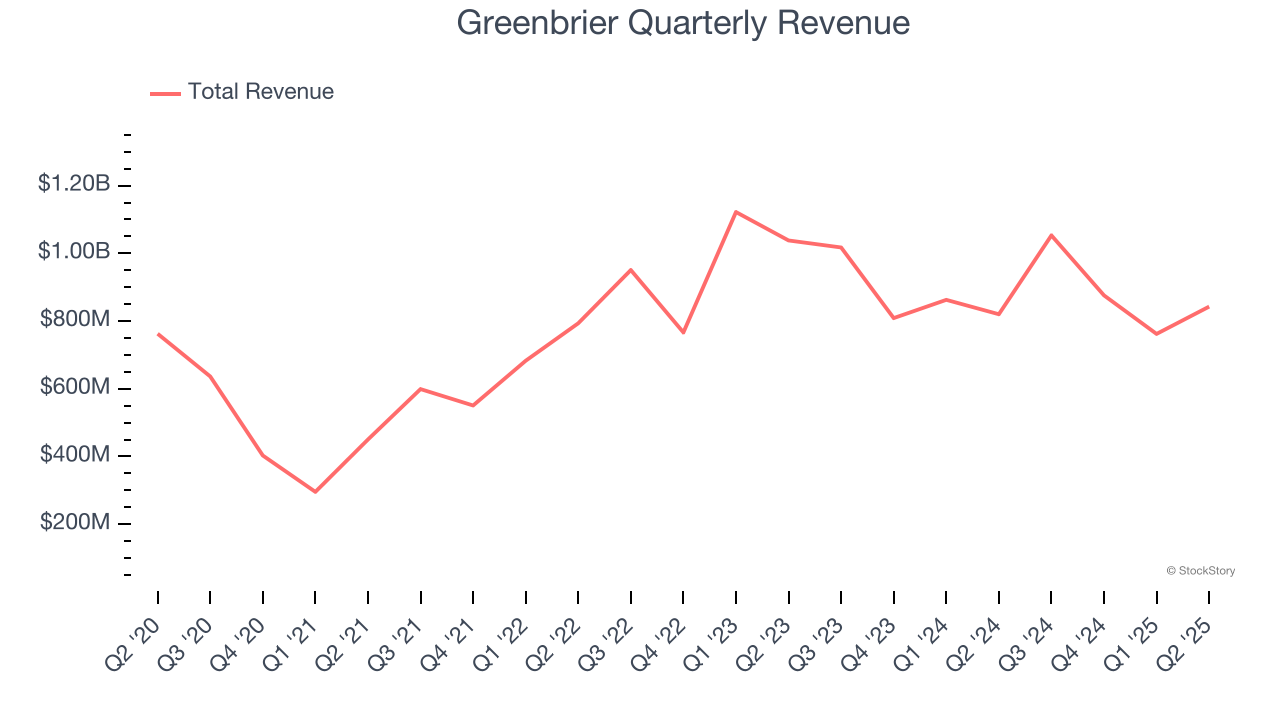
We at StockStory place the most emphasis on long-term growth, but within industrials, a half-decade historical view may miss cycles, industry trends, or a company capitalizing on catalysts such as a new contract win or a successful product line. Greenbrier’s performance shows it grew in the past but relinquished its gains over the last two years, as its revenue fell by 4.5% annually. Greenbrier isn’t alone in its struggles as the Heavy Transportation Equipment industry experienced a cyclical downturn, with many similar businesses observing lower sales at this time. 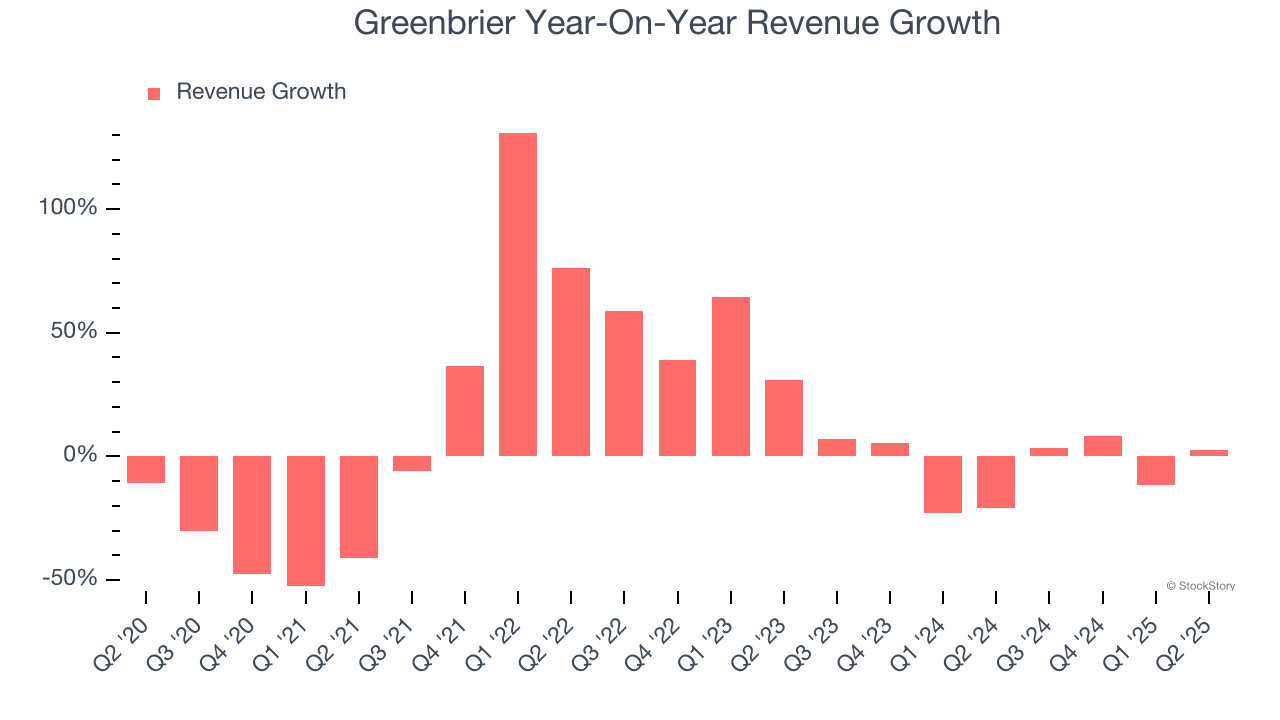
We can dig further into the company’s revenue dynamics by analyzing its number of units sold, which reached 3,900 in the latest quarter. Over the last two years, Greenbrier’s units sold averaged 12% year-on-year growth. Because this number is better than its revenue growth, we can see the company’s average selling price decreased. 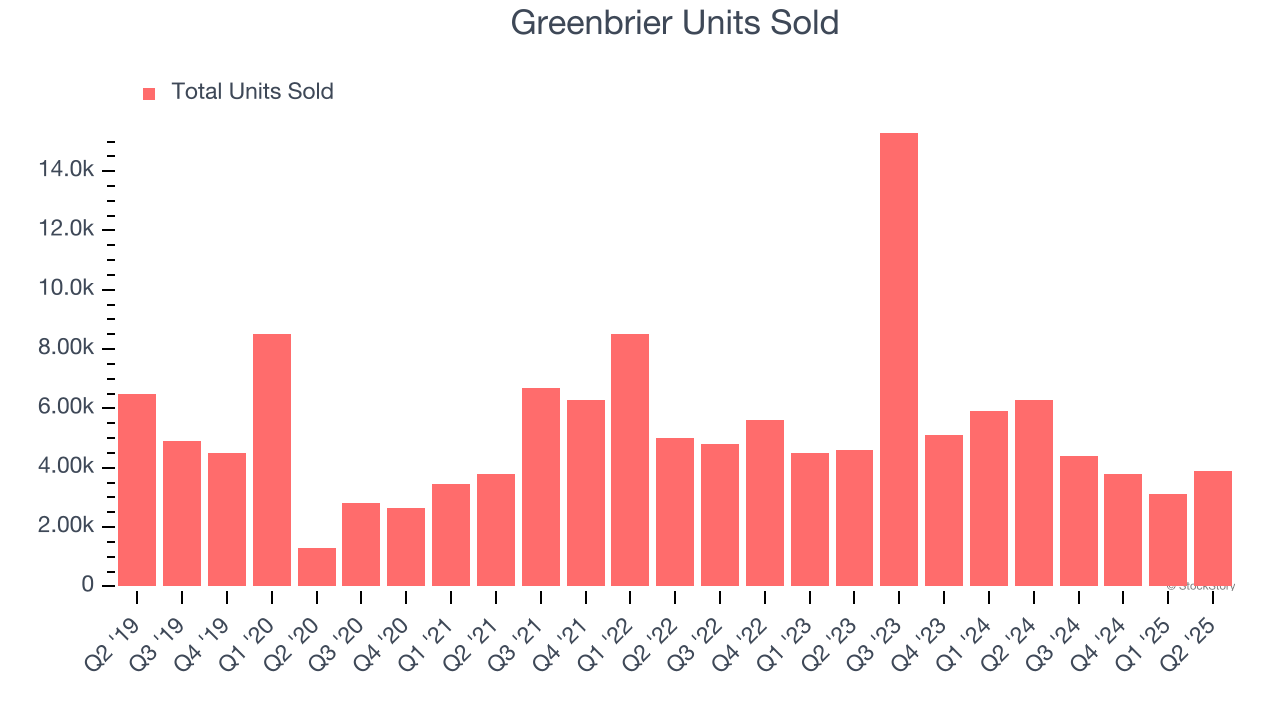
This quarter, Greenbrier reported modest year-on-year revenue growth of 2.7% but beat Wall Street’s estimates by 7.3%.
Looking ahead, sell-side analysts expect revenue to decline by 9.3% over the next 12 months, a deceleration versus the last two years. This projection doesn't excite us and indicates its products and services will face some demand challenges.
Here at StockStory, we certainly understand the potential of thematic investing. Diverse winners from Microsoft (MSFT) to Alphabet (GOOG), Coca-Cola (KO) to Monster Beverage (MNST) could all have been identified as promising growth stories with a megatrend driving the growth. So, in that spirit, we’ve identified a relatively under-the-radar profitable growth stock benefiting from the rise of AI, available to you FREE via this link.
Operating Margin
Greenbrier was profitable over the last five years but held back by its large cost base. Its average operating margin of 6.3% was weak for an industrials business. This result isn’t too surprising given its low gross margin as a starting point.
On the plus side, Greenbrier’s operating margin rose by 10.6 percentage points over the last five years, as its sales growth gave it operating leverage.
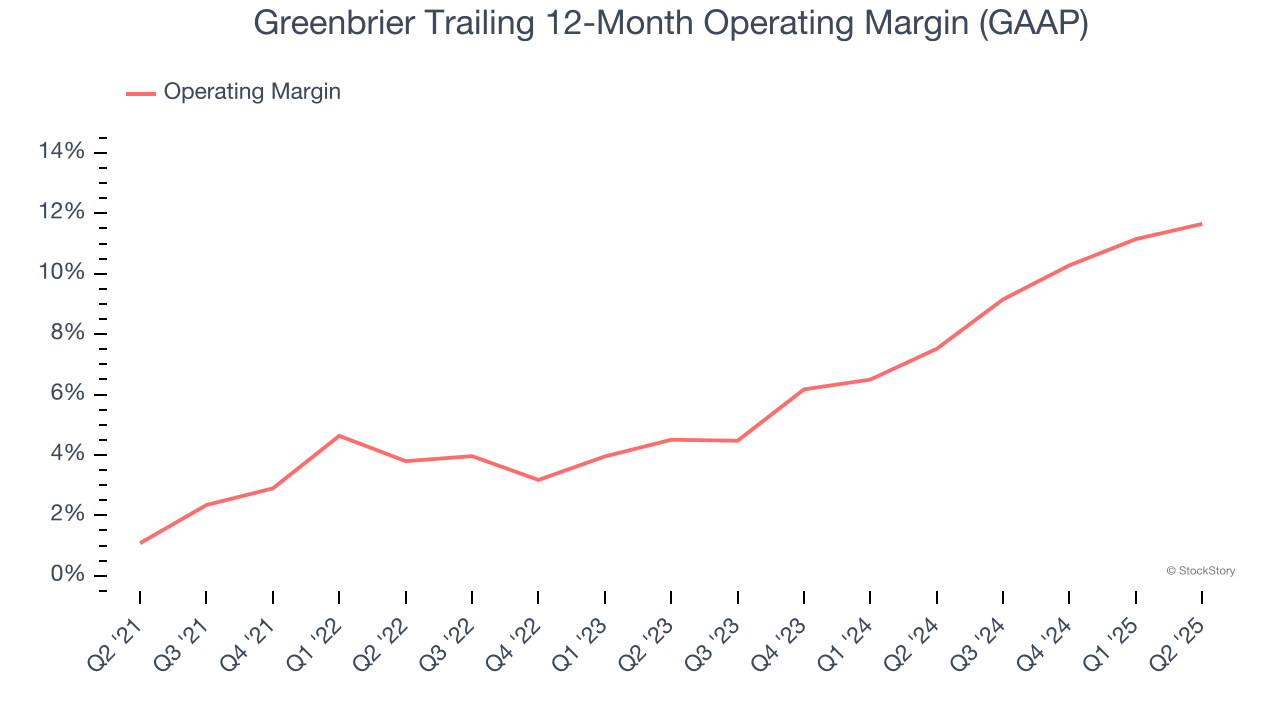
This quarter, Greenbrier generated an operating margin profit margin of 11%, up 2.2 percentage points year on year. Since its gross margin expanded more than its operating margin, we can infer that leverage on its cost of sales was the primary driver behind the recently higher efficiency.
Earnings Per Share
We track the long-term change in earnings per share (EPS) for the same reason as long-term revenue growth. Compared to revenue, however, EPS highlights whether a company’s growth is profitable.
Greenbrier’s EPS grew at an astounding 18.2% compounded annual growth rate over the last five years, higher than its 2.9% annualized revenue growth. This tells us the company became more profitable on a per-share basis as it expanded.
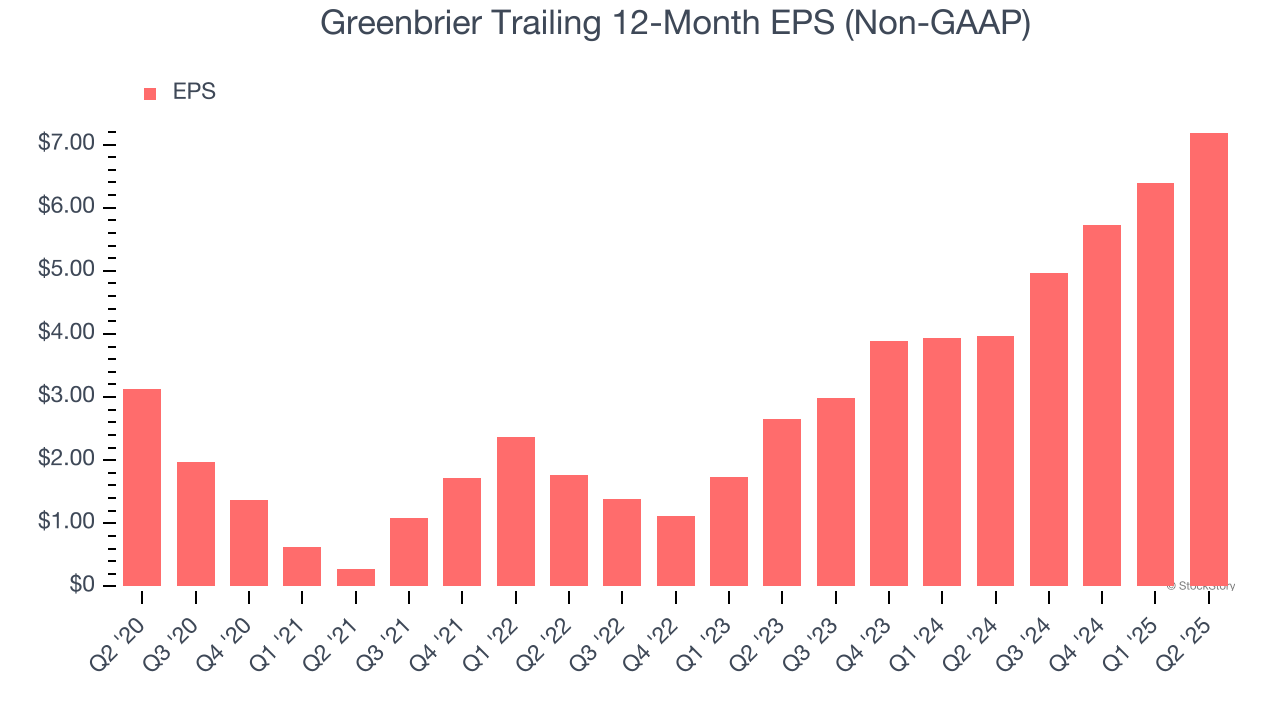
Diving into Greenbrier’s quality of earnings can give us a better understanding of its performance. As we mentioned earlier, Greenbrier’s operating margin expanded by 10.6 percentage points over the last five years. On top of that, its share count shrank by 3.9%. These are positive signs for shareholders because improving profitability and share buybacks turbocharge EPS growth relative to revenue growth. 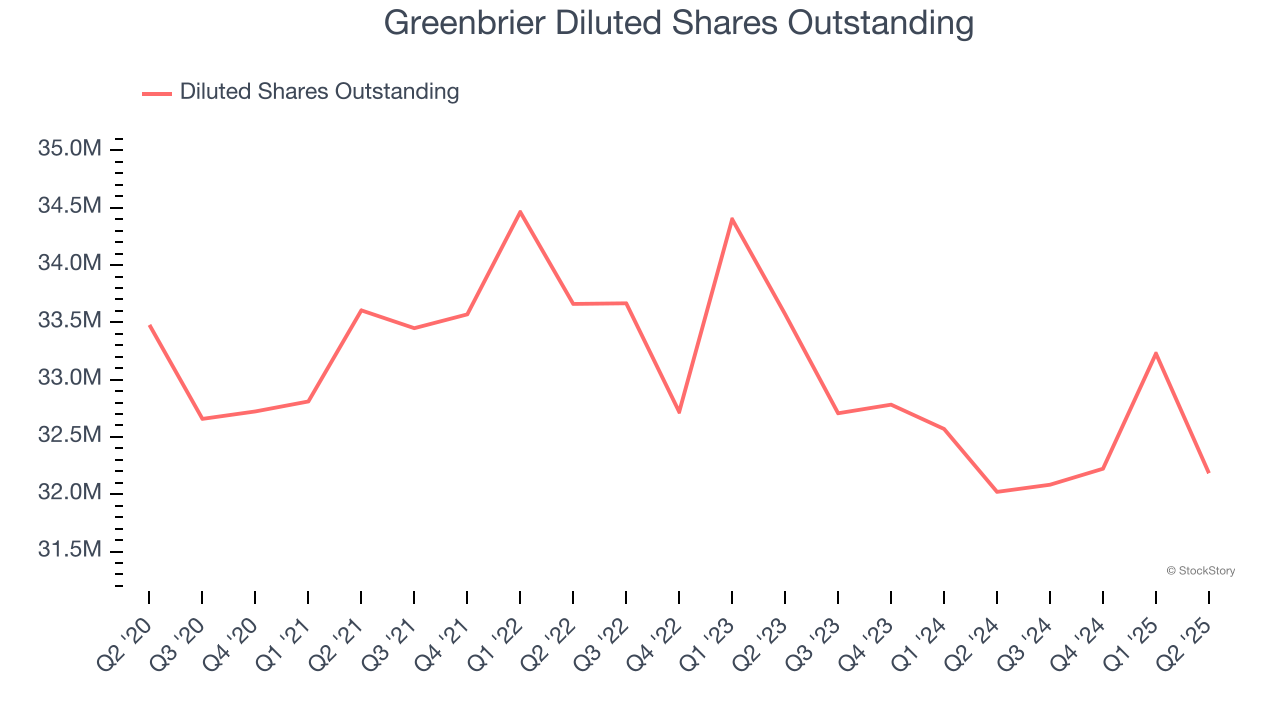
Like with revenue, we analyze EPS over a shorter period to see if we are missing a change in the business.
For Greenbrier, its two-year annual EPS growth of 64.4% was higher than its five-year trend. We love it when earnings growth accelerates, especially when it accelerates off an already high base.
In Q2, Greenbrier reported EPS at $1.86, up from $1.06 in the same quarter last year. This print easily cleared analysts’ estimates, and shareholders should be content with the results. We also like to analyze expected EPS growth based on Wall Street analysts’ consensus projections, but there is insufficient data.
Key Takeaways from Greenbrier’s Q2 Results
We were impressed by how significantly Greenbrier blew past analysts’ sales volume expectations this quarter. We were also excited its EPS outperformed Wall Street’s estimates by a wide margin. Zooming out, we think this quarter featured some important positives. The stock traded up 11.2% to $52.31 immediately after reporting.
Greenbrier put up rock-solid earnings, but one quarter doesn’t necessarily make the stock a buy. Let’s see if this is a good investment. We think that the latest quarter is only one piece of the longer-term business quality puzzle. Quality, when combined with valuation, can help determine if the stock is a buy. We cover that in our actionable full research report which you can read here, it’s free.


